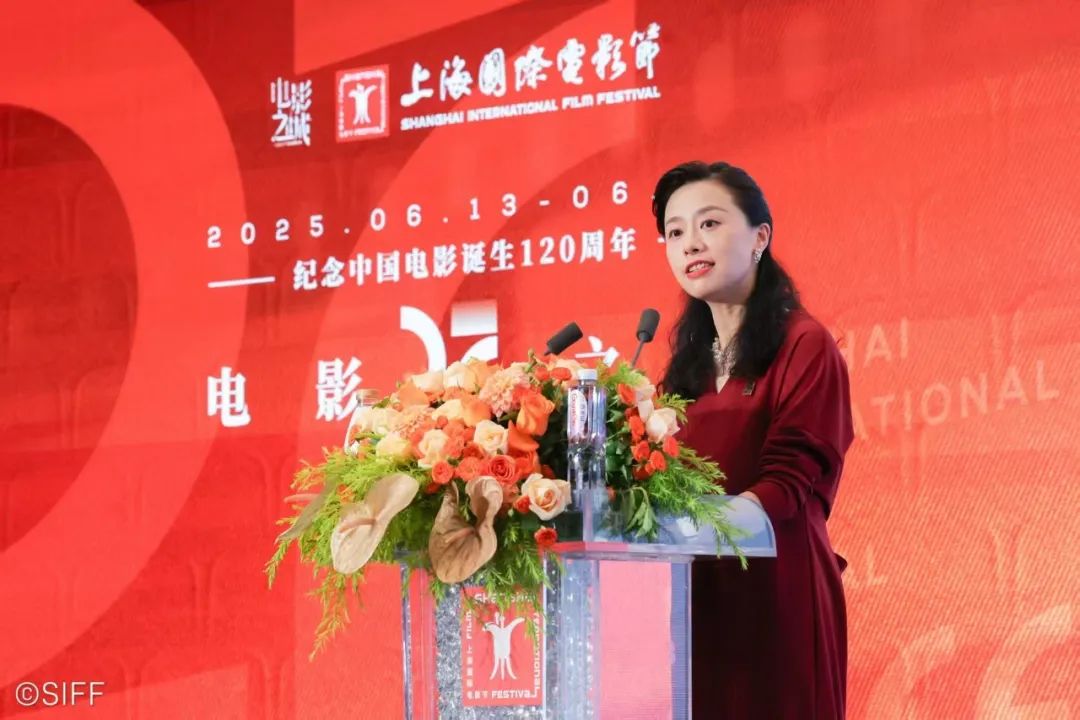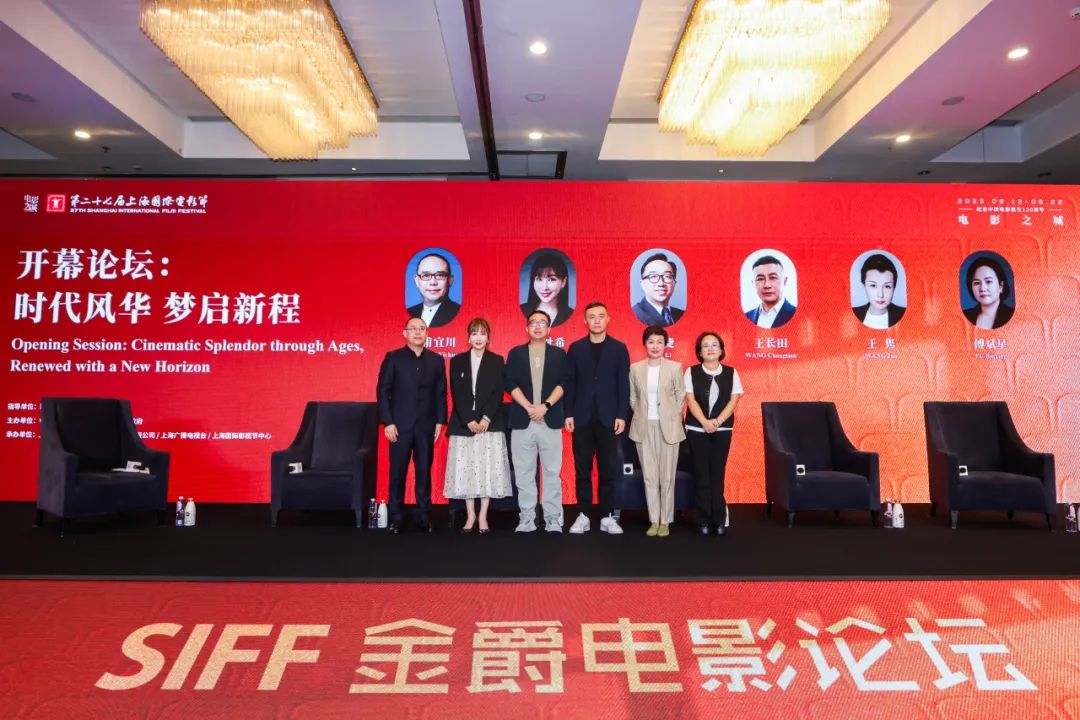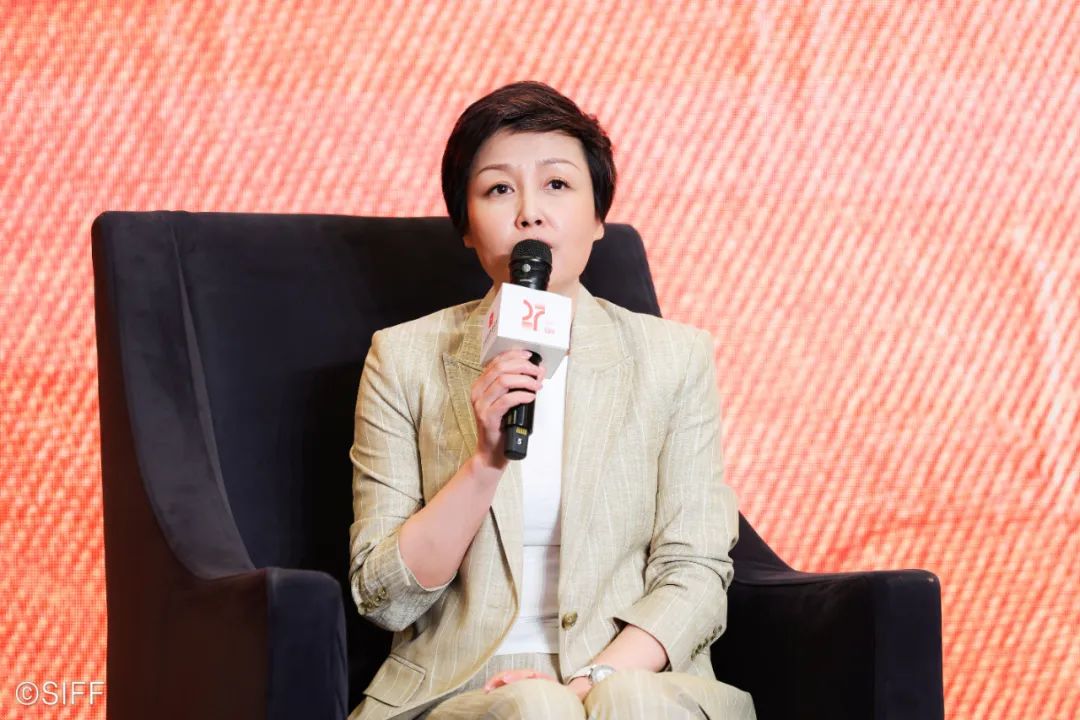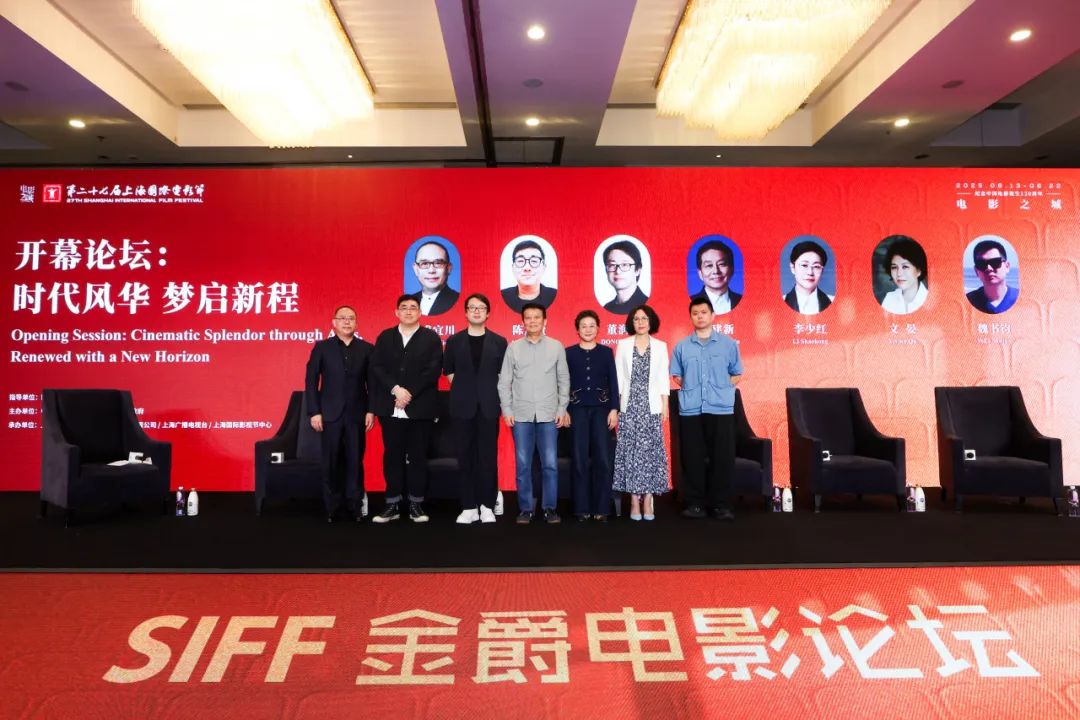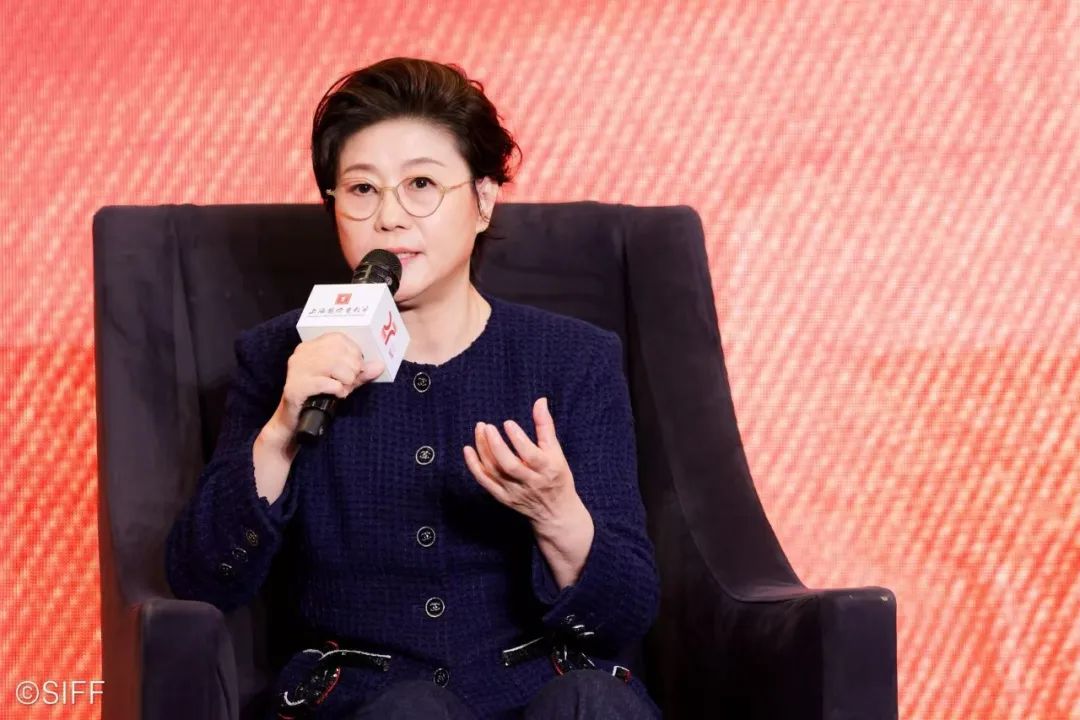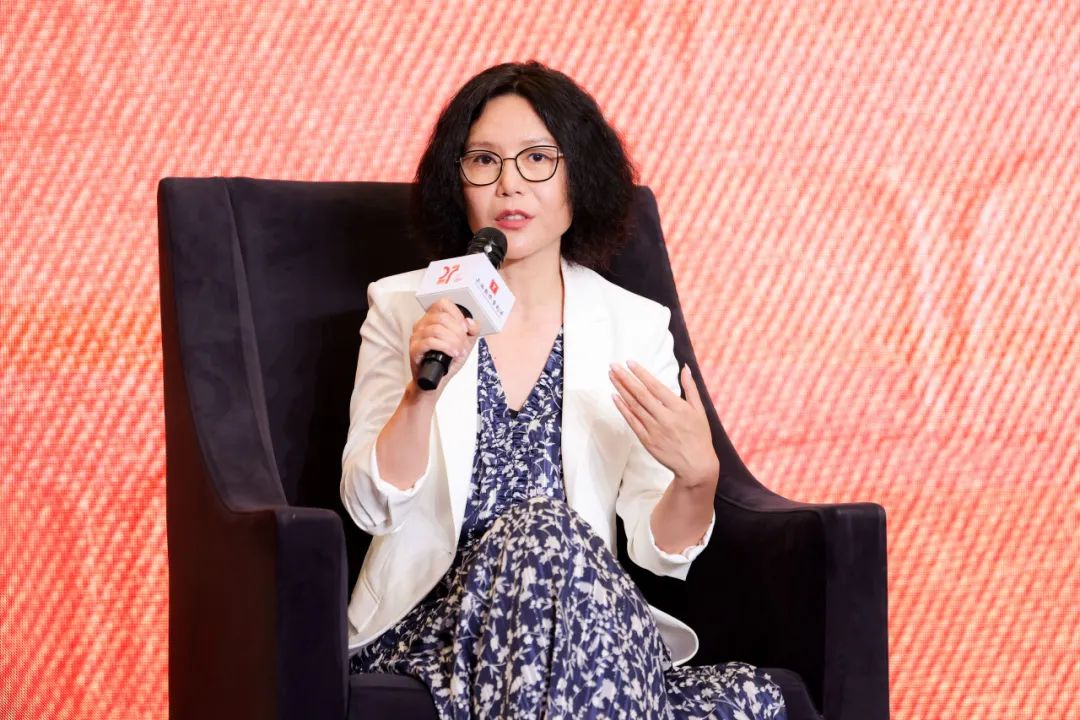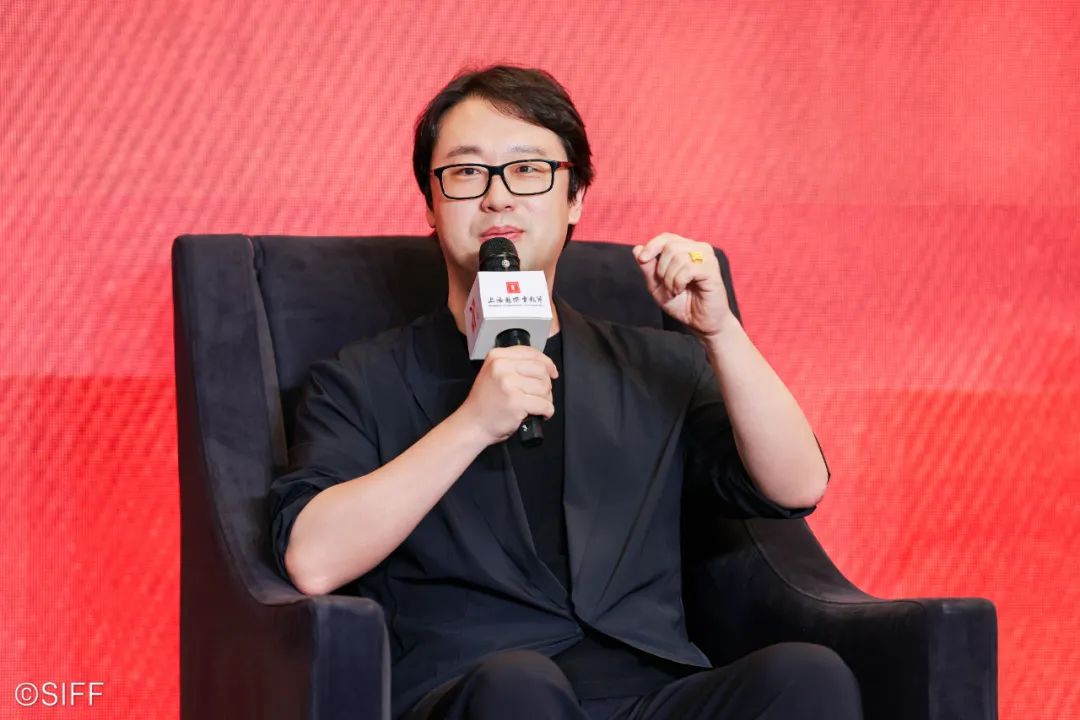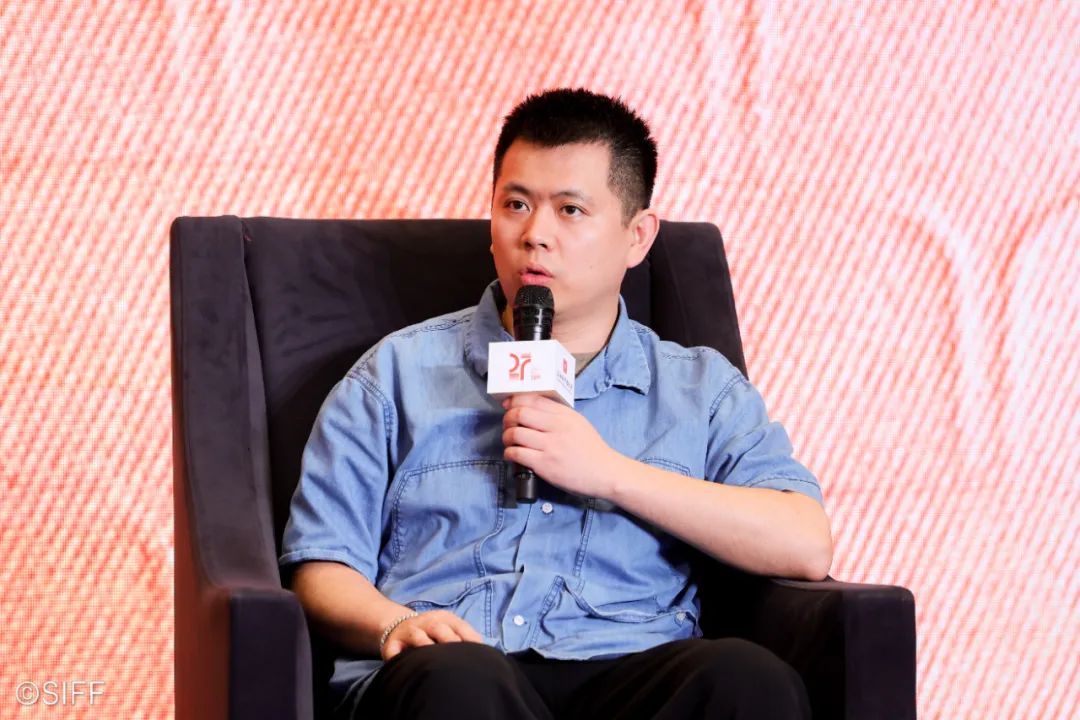SIFFORUM | Build Differentiated Competitiveness amid Industry Transformation
In recent years, the new landscape and vitality of China’s film market reflect both audiences’ growing demand for high-quality content and filmmakers’ unwavering dedication to artistic excellence. On the morning of June 15, the opening session of SIFFORUM at the 27th Shanghai International Film Festival (SIFF), themed “Cinematic Splendor through Ages, Renewed with a New Horizon”, brought together leading film executives and renowned filmmakers to explore strategies for building differentiated competitiveness in a changing environment and driving the sustainable, high-quality development of China’s film industry.
Liu Yina, Director of the Film Division of the Publicity Department of Shanghai Municipal Committee of CPC, reviewed the progress of Shanghai’s “City of Film” initiative - implementing the *Three-Year Action Plan for High-Quality Film Development in Shanghai (2024–2026)* - and outlined future plans. The forum featured two roundtable discussions, focusing on “New Drivers for Industry Growth” and “Emerging Forces in Content Creation”. Huangfu Yichuan, Researcher at the China Film Art Research Center and Editor-in-Chief of Contemporary Cinema, moderated the event.
Attendees included Mao Yu, Executive Deputy Director of China Film Administration; Zhang Pimin, Chairman of China Film Foundation; Bai Yimin, Secretary of the Party Committee and Chairman of Huaxia Film Distribution Co., Ltd.; and Pan Min, Deputy Director of the Publicity Department of Shanghai Municipal Committee of CPC and Director of Shanghai Film Bureau.
Liu Yina
Director of the Film Division of the Publicity Department of Shanghai Municipal Committee of the CPC
On this day last year, Shanghai unveiled its three-year action plan to become a global “City of Film”. Over the past year, we’ve turned the dream into a tangible reality, weaving the magic of cinema into the fabric of urban life.
Great films, limitless possibilities. Shanghai has built a comprehensive film ecosystem, with 2024 seeing: locally produced films accounting for 20% of China’s total box office; 13 billion-yuan-grossing films (25% of China’s total); 3 works winning the “The Best Works Award”; 8 films earning 12 honors at the Huabiao Film Awards, Golden Rooster, and Hundred Flowers Awards. More masterpieces are now conceived, nurtured, and celebrated in Shanghai - inspiring the industry, empowering audiences, and burnishing the city’s cultural legacy.
For films, the whole city moves together. With 358 cinemas and 2,217 screens (including over 100 high-tech theaters) spread across 16 districts, Shanghai ranks first among global cities in terms of cinema scale. In 2024, the city’s box office reached 2.15 billion yuan, topping all cities in China. Through the collective efforts of districts and industries citywide, Shanghai has created a film culture environment that is more immersive, life-enriching and culturally distinctive - for every movie lover.
Cinema makes life extraordinary. From issuing “Enjoy Movies in Shanghai” consumer vouchers to launching the “Premiere in Shanghai” branding campaign and hosting 21 screening events throughout the year, the city has become a vibrant hub for cinematic experiences. The commercialization of film-related IP has seen significant progress, and plans are underway to open a “City of Film” flagship store. The city is also driving deep integration of film with education, healthcare, and other sectors.
A city that loves film, a city that nurtures talent. By focusing on the diversity of film talent and taking targeted action, Shanghai is addressing key challenges faced by creators - such as difficulties in creation, financing, and production. The city is building a closed-loop talent development system that spans the entire incubation cycle, establishing a young filmmakers’ database and a script library to allow creators to delve fully into their art.
The 27th SIFF has officially begun. We will transform SIFF from a professional film event into a people’s festival with broader participation and deeper impact, fostering a down-to-earth, engaging and culturally-grounded “City of Film” atmosphere of “Where every citizen becomes part of the story, and the whole city shimmers with silver screen light”.
Roundtable I:
New Drivers for Industry Growth
Wang Changtian
Chairman of Enlight Media
We must objectively acknowledge that films, as cultural products, have seen a decline in both influence and market demand. This reality compels us to redefine cinema’s position and address critical related issues. When certain contemporary films prove uncompetitive against other entertainment formats, the solution isn’t to produce more, but to produce better. We must enhance films’ inherent appeal and must-see quality to win back audiences. The film production model - including funding allocation and cost control during production - also needs reform. We must address the issue of rapidly rising costs that exceed what the market can realistically absorb. Additionally, we should lower our overreliance on box office revenue and increase the proportion of income from film-related merchandise. This essentially means treating film as a rich source of intellectual property, using it to drive the sales of associated products.
In this regard, Enlight Media’s Ne Zha 2 has achieved notable success. According to rough estimates, among the licensed products, a single category alone generated over 10 billion yuan in sales. Although the filmmakers themselves didn’t receive the full amount, it’s entirely plausible that the film’s total merchandise revenue could exceed 100 billion yuan, despite the widespread issue of piracy. Overseas, the film grossed over $100 million, the highest for a Chinese film in the past 20 years. The global expansion of Chinese cinema is clearly an unstoppable trend, and it presents unprecedented opportunities for the Chinese film industry.
Li Jie
President, Damai Entertainment
China’s film industry must now rebuild confidence among four key stakeholders: audiences, investors, producers, and marketing teams. This confidence cannot be achieved through slogans, but requires concrete changes across the board. From the audience's perspective, if expectations remain unmet, theater attendance cannot be guaranteed, making it difficult to restore viewer confidence. Without strong attendance figures, investor confidence will waver, and new funding will dry up. If production costs stay high, producers too will lose faith. And for marketing teams, the return on investment for roadshows, premieres, promotional materials, and even short videos remains uncertain. When traditional methods lose efficacy, what approaches should we take for the future?
Historically, we have weathered downturns, yet I firmly believe all challenges are transient. Time and again, history has proven that innovation alone can break cyclical impasses. Today’s market pressures, paradoxically, grant us a crucial chance for reflection. Chinese cinema must now reinvent itself, pursuing holistic innovation across creative development, production processes, technological applications, and marketing distribution. Cinema must not become an obsolete art form; through relentless innovation, we shall reclaim its place in the hearts of young audiences.
Chen Zixi
Chairman and CEO of WANDA CINEMAS
China currently boasts over 80,000 cinema screens - an industry-leading scale globally in terms of hardware. However, this impressive infrastructure contrasts sharply with a growing shortage of high-quality content. There simply aren’t enough compelling films to draw audiences into theaters. One reason is that many of the rising new-generation directors today have higher creative ambitions. They are no longer content with making low-budget films and are striving for higher industrial standards - something that requires greater financial investment and longer production cycles. As a result, the volume of content has declined. Meanwhile, the next generation of filmmakers has yet to fill the gap. Wanda Group has launched the “Time & Youth: Filmmaker Support Program” in hopes of supporting young directors as they transition from short films to features, and from small platforms to the big screen. We received over 800 scripts and selected 10 directors. We are still working closely with them, revising and refining their screenplays. We’ve found that even producing a short film can be a significant challenge for new directors.
To truly solve the issue of content supply, we must start with talent development. Whether they are trained domestically or returning from overseas, the key questions are: how can these directors quickly enter the market, connect with the industry, tell stories that resonate with Chinese audiences, and deliver high-quality content in a sustainable way? These are urgent challenges we need to address.
Wang Juan
Secretary of the Party Committee and President of Shanghai Film Group
Generations of filmmakers have made history, written history, and rewritten history. Technological evolution has unlocked greater potential for cinema’s development - and naturally, audiences have grown both more expectant and more discerning toward films. This is a simple logic. As filmmakers at Shanghai Film Group, we constantly ask ourselves: how do we engage with audiences, respond to the market, and shape the future of cinema? First and foremost, we must clarify that our goal is singular: to produce compelling films and achieve strong box office returns. Without even considering competition from other entertainment forms, the film industry itself faces numerous barriers that need to be overcome and processes that need to be streamlined. Shanghai Film Group is continuously pushing forward in content production, technological innovation, and marketing, striving to establish a systematic, interconnected path for success.
Fu Binxing
President of Huace Film & TV
The aesthetic taste, professionalism, and cultural awareness of today’s moviegoers are all rapidly improving, and their expectations are growing higher, which inevitably raises the demands on industry professionals. This requires more outstanding talent. That’s why, a few years ago, we established the Huace Film Academy and the Huace Film and TV Technical College, with a long-term vision in mind to discover and nurture talented individuals who are passionate about the industry and about content creation. At the same time, we strive to deeply accompany these creators, helping them reach larger stages. Throughout this process, we consistently emphasize using creativity to balance and solve cost issues, rather than relying on increasing production budgets to compensate for a lack of creative ideas. We firmly believe that the creative industry must remain open, allowing everything to return to the core of creativity.
Roundtable II:
Emerging Forces in Content Creation
Huang Jianxin
Director, Screenwriter, Producer
These days, whenever I meet a director, I will ask: “Have you been going to the cinema more or less in the past two years?” The answer is always: less. Even we, the professionals, aren’t going to the movies - so how can we expect regular audiences to go? Naturally, this leads to lower attendance in cinemas. As a result, theaters cram all their screenings into the top three blockbusters, squeezing out all the small- and medium-budget films. When investors see that there’s no money to be made, they become even more hesitant to invest. From last year to this year, I’ve produced three films - all directed by young directors who are very talented, and their works are excellent. But they’re under enormous financial pressure. How is that sustainable? A director isn’t a market strategist; their role is to use imagination to showcase the charm of cinema. If they’re under too much pressure, it drains their energy. A film that could have been a 90-point masterpiece ends up being a 65 or 70 work - just barely passing. As producers, we must shield directors from these pressures and let them focus on their creative process.
Li Shaohong
Director
Over these two or three decades, I’ve realized fundamentally that change is inevitable. From celluloid to digital, and now the AI revolution - each technological leap forces us to redefine our roles. Today, the line between creators and audiences has been obliterated by the internet and short-form video. When I scroll through TikTok, I’m an audience member; when I direct, I channel that very perspective. My hours spent watching shorts aren’t leisure – it is a way to understand the industry and the world, and to find common ground between creation and audience engagement. Short videos have become a part of daily life; they serve as a window that connects us with the world. People often say that AI will replace directors and that, in the future, movies won’t even need to be made. However, I firmly believe that while the methods of creation may change and roles may evolve, the essence of creativity will remain the same. Even if you’re co-creating with AI, the creative process itself doesn’t change.
Wen Yan
Director
A few years ago, major changes in the industry happened only occasionally, and we would spend time debating whether to embrace them or resist. Now, changes are happening every year, sometimes even every few months. So, should we accept them? We must accept them. As creators, we need to deeply understand that today’s audience has grown up watching videos and playing games, with their sensibilities honed by the constant stimulation of multimedia. As a result, their expectations for genre storytelling are much higher, and conventional narrative structures no longer captivate; they induce yawns. We must innovate within genres and be more precise in how we express themes. This presents significant challenges for creators, but therein lies our creative opportunity. We must align ourselves with the audience and co-create with them stories that pulse with the rhythms of our times. This is our essential mission.
Dong Runnian
Director, Screenwriter
Lately, I’ve been talking a lot with people about short videos - and the more we talk, the more anxious I get. To ease that anxiety, I end up scrolling through short videos again. Then, at some point, it hit me: I had been completely misunderstanding short videos. No one watches just one short video at a time. People scroll for dozens of minutes, sometimes even hours. We shouldn’t view short videos as isolated clips, but as a collective experience - a cluster. Along with the products we browse on platforms like Taobao or RedNote, these videos help paint a sketch of who we are: our personalities, preferences, and habits. In that sense, whether we’re watching short videos or films, it’s no longer just about relaxation or escapism. What really matters now is finding content that reflects our own perspectives - something that gives voice to who we are. That, I believe, is what audiences today value most. People used to say that directors “speak to the audience”, but that still implies a distance, a creator standing opposite the viewer. Now, I think creators should stand among the audience. My father was a factory worker, and many of my friends are working-class. I understand them - I stand with them - so I told their story. That’s how Johnny Keep Walking! came to be. And when it was released, it was precisely those viewers who supported it.
Anselm Chan
Director
Today’s audiences are incredibly sophisticated - their standards are high, and they prioritize storytelling and word-of-mouth recommendations. As filmmakers, we must clearly articulate what we want to express while also bridging the gap with our audience. In other words, there must be a balance between artistic expression and audience reception. I often say that a film is a director opening up their world and inviting the audience to step inside. Now, we need to “open” that world even wider to welcome more viewers.
When making The Last Dance, I wrote the script myself and directed it personally, but even after 48 editing versions, it still felt off. So, we traveled from Guangzhou to Hong Kong, conducting research with over 1,000 viewers. They told us where the pacing dragged or which shots failed to convey the right emotions - and we revised it scene by scene. The final 49th version that hit theaters was essentially co-edited by our audience. This experience taught me that directors must create with their audience in mind, bringing them into the process to collaborate on the work. Only then can truly great films emerge.
Wei Shujun
Director
Watching a film in a theater used to feel like a ritual; now, people are looking for emotional connection, psychological release, even something they can talk about with others. That means directors need to offer more points of resonance - we can’t stay locked in our own creative bubbles, indulging in personal expression for its own sake. After all, films are ultimately meant to meet the audience, and enter the marketplace. Yet creators must remain true to themselves - not just chase trends. By the time a film finishes production, whatever’s fashionable will have passed. We must mine deeper truths to develop distinctive voices. If I had to sum it up in a few words: stay true to yourself, but keep your mind open.

